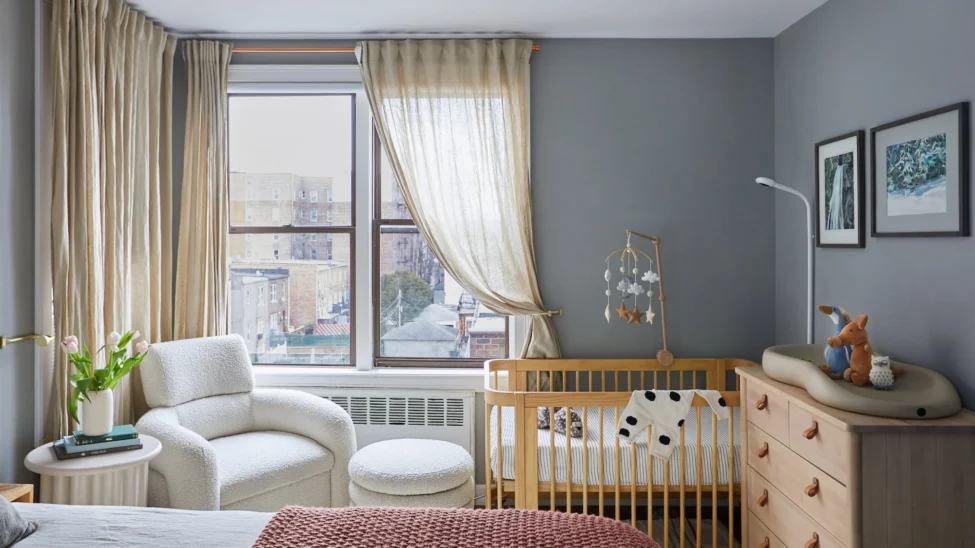
Why Style Even Matters When You’re Sleep-Deprived
Let’s be honest — in the haze of new parenthood, a crib might seem like just another item to check off the list. But I’ve seen firsthand how much difference a thoughtfully chosen crib can make. It’s not just about looks. When the room feels good to you, your nervous system responds. You feel calmer. That calm gets passed on to your baby. It’s all connected.
One of the mothers I worked with, Katya, told me she didn’t think it mattered. She bought the first crib that fit the space. It worked — technically — but every time she walked into the room, she felt like something was off. She ended up replacing it six weeks in. “I didn’t think I’d care,” she said, “but now I actually enjoy being in here.”
Sometimes, functionality and beauty go hand in hand. Choosing the right crib can be grounding for you as a parent — it’s part of creating a space where you want to be.
Does the Crib Match the Mood of the Room?
Before you click “add to cart”, pause and look around your baby’s room. Is it soft and cozy? Clean and minimal? Bright and playful? The crib will be the visual anchor. If it’s a completely different tone — too industrial in a pastel room, too traditional in a sleek modern space — it can feel jarring.
Some parents go for contrast on purpose. That’s totally valid! But if your goal is visual harmony, it helps to think of the crib as part of the ensemble, not a solo act. That doesn’t mean everything has to match exactly (we’re not going for a showroom). It just needs to feel like it belongs.
Look for shared elements — curved lines, matching wood tones, similar textures — to keep the space feeling cohesive.
Color, Shape, Details: What Actually Matters?
I once spent 45 minutes standing in front of two nearly identical cribs, holding fabric swatches and overthinking everything. Sound familiar? Here’s what usually makes the biggest difference:
- Color: White or natural wood is easy to blend. Dark stains can feel heavy unless balanced out.
- Shape: Rounded edges feel soft and warm; square lines give structure and calm.
- Details: Avoid anything too busy. Subtle accents add charm; ornate carvings can distract.
Sometimes the detail that makes a crib stand out is what makes it a mismatch. One client had a beautiful crib with gold knobs — lovely, but they clashed with everything else. We switched to something simpler, and the whole room breathed easier.
Less is more when you’re layering pieces. The crib doesn’t need to make a statement. It just needs to feel right.
Stories From the Nursery: Real-Life Lessons
Let me share Anna’s story. She had a vision board for her nursery — all beige tones, soft linen curtains, and rattan baskets. She ordered a sleek modern crib in black metal because it was on sale and had great reviews. When it arrived, it was a punch to the gut. “It looked amazing online, but it just didn’t feel like mine,” she told me. She sold it two weeks later.
Then there was Dina, who thought all cribs were ugly until she found a handmade one on a secondhand site. It was a bit worn, but matched the vintage touches in her apartment perfectly. She refinished it herself (yes, nesting is real), and now it’s her favorite part of the room.
You don’t have to follow trends. Trust what feels right in your space. That’s what will age well.
The Magic Is in the Quiet Details
Once the crib is in, the rest tends to fall into place — a soft rug here, a mobile there. It’s those finishing touches that bring the room to life. I always say, the crib is like the sofa of your baby’s first room: get that right, and everything else flows.
If you’re feeling overwhelmed, come back to this: What kind of feeling do you want when you walk into the room? If you answer that, the crib will follow. And don’t be afraid to change your mind. The right one might not


